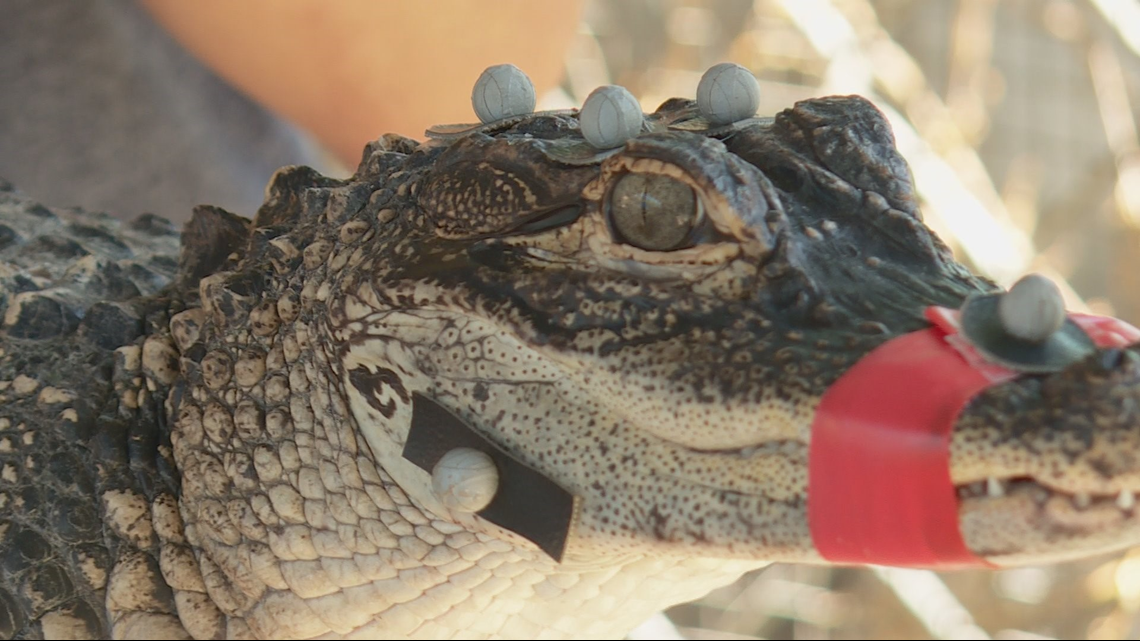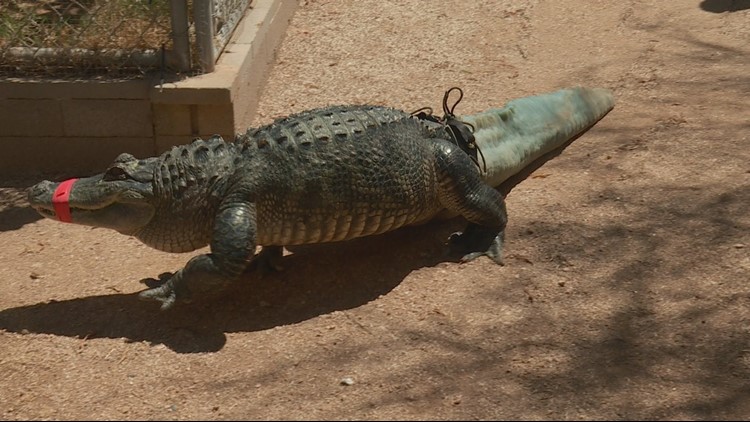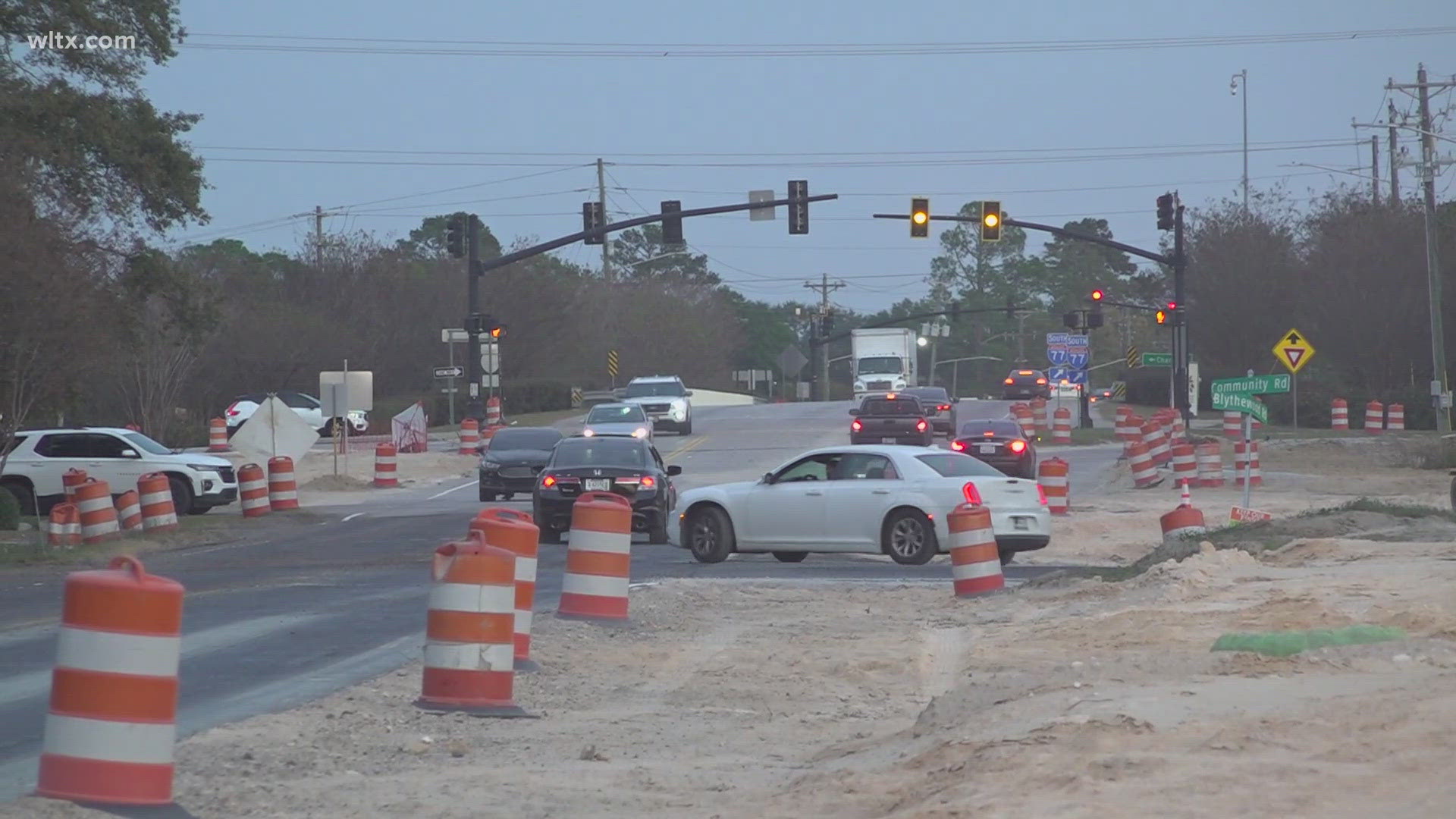Students from Midwestern University are experimenting with technology to help alligators at a reptile refuge in Scottsdale. The benefits of their research could reach far beyond the animal kingdom.
“When he was rescued about a decade ago, he didn't have a tail,” said Michael Biggs, a Midwestern University Biomed student. “He was found with a bunch of other alligators in the back of a semi-truck.”
Mr. Stubbs the alligator is a favorite with the visitors at Phoenix Herpetological Society, where he’s lived for several years.
“Without a tail, he just floats and doggie paddles or just sinks to the bottom,” he said.
The 15-year old has overcome some big obstacles, but Mr. Stubbs' tail is vital to his movement.
“We've been able to do some water testing,” said Biggs. To help Mr. Stubbs feel complete again, he crafted a prosthetic alligator tail.
“He can actually float normally in the water and swim, if he wants to,” he said.
The research tied to Mr. Stubbs’ new tail could benefit prosthesis use in general.
“Humans to animals… everybody,” said Biggs.
And Mr. Stubbs isn’t the only alligator to benefit from modern science. Pumpkin, a 2-year old alligator was in bad shape when she first arrived.
“Unable to walk, she had no muscle definition throughout her body,” said Leslie Wu, who is also working on the research.
It took some Hollywood magic to help Pumpkin and Mr. Stubbs. The same technology used in movies like Avatar and The Lord of the Rings became the cornerstone for this research.


“What we are doing with the sensors is we are trying to track how her body is moving,” said Wu.
“It had not been done before,” Biggs added.
And it’s working. Motion capture technology in animal prosthetics has had a much greater impact than these two ever could have imagined.
“There are a lot of people who benefit from seeing Mr. Stubbs with a prosthetic tail,” said Biggs. “There are some children… and this isn't just in Arizona, but across the United States and the world, that see Mr. Stubbs… videos of him, pictures of him, see how well he does and it gives them hope when they have to use their own leg or foot prosthesis.”
“The psychological benefits are very real,” he said.
Michael plans to take this research and apply it to the Biomedical field he’s now pursuing, while Leslie is working toward her Doctorate in Veterinary Science, to continue helping animals like Pumpkin.



